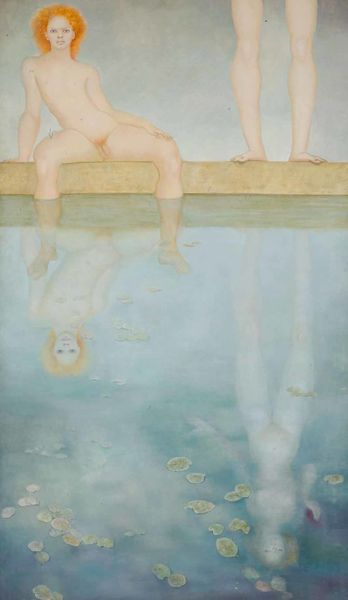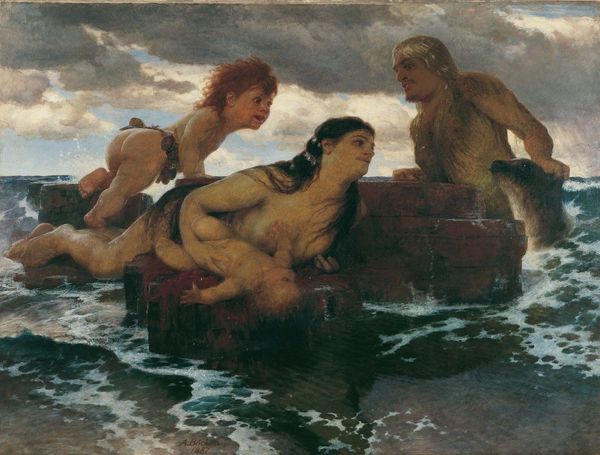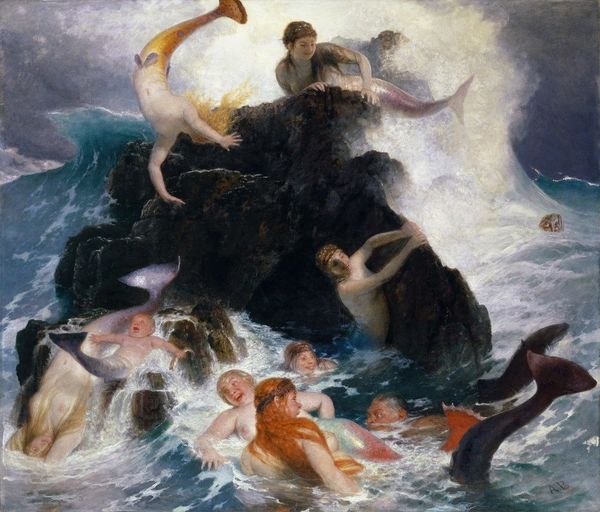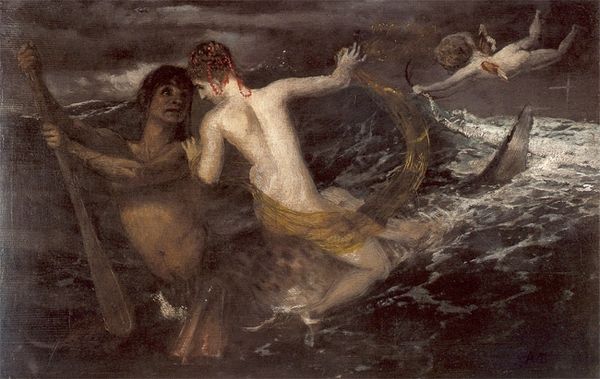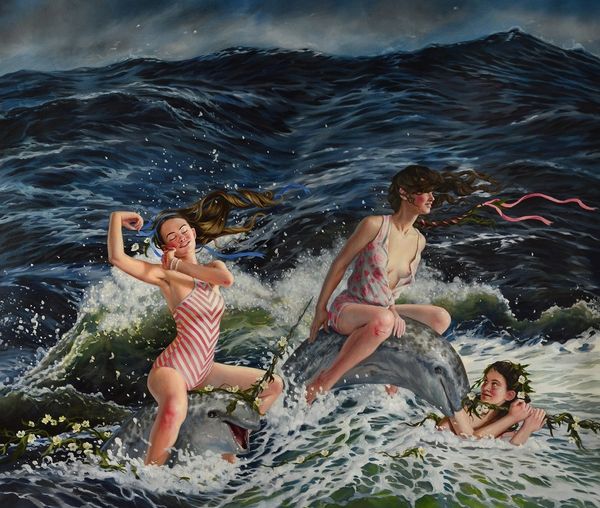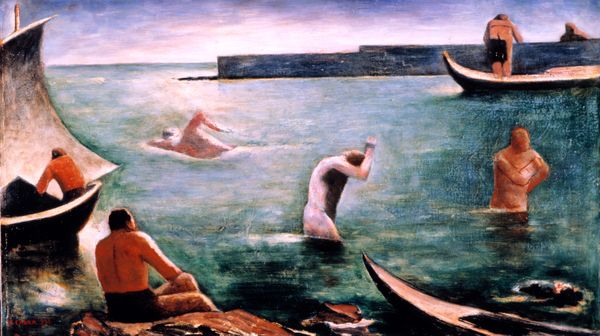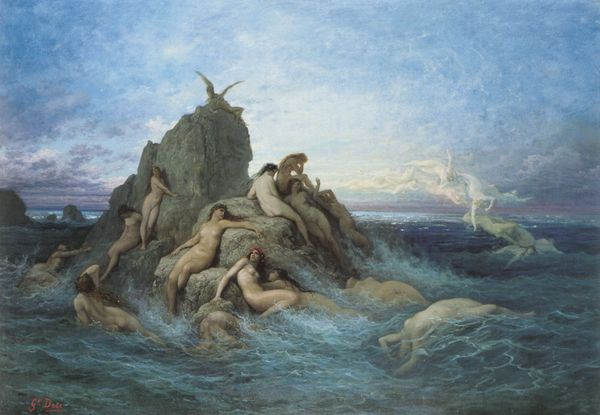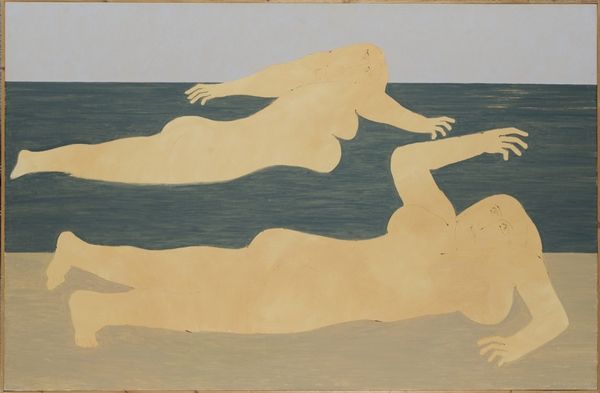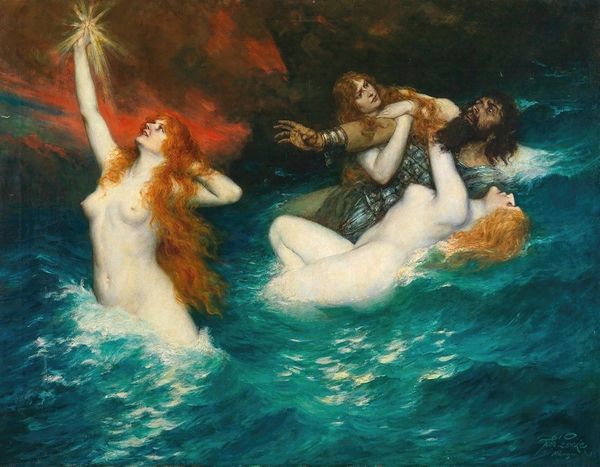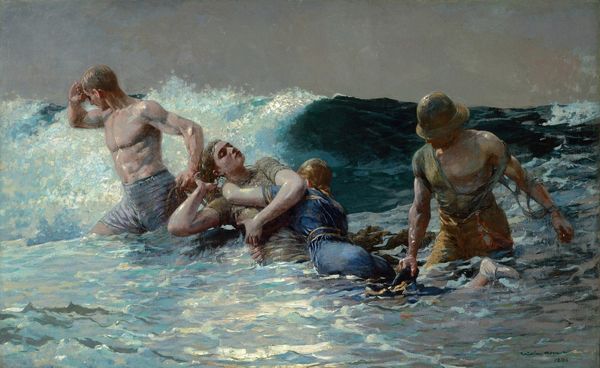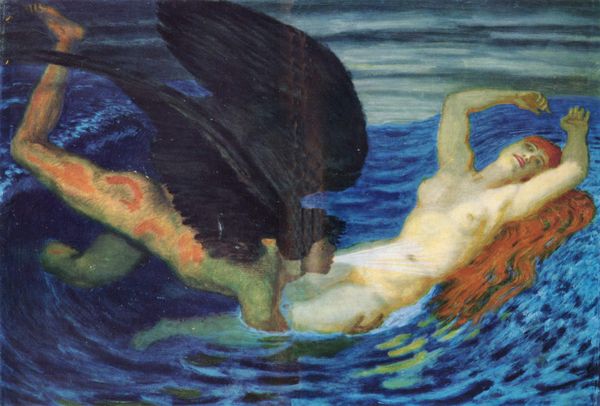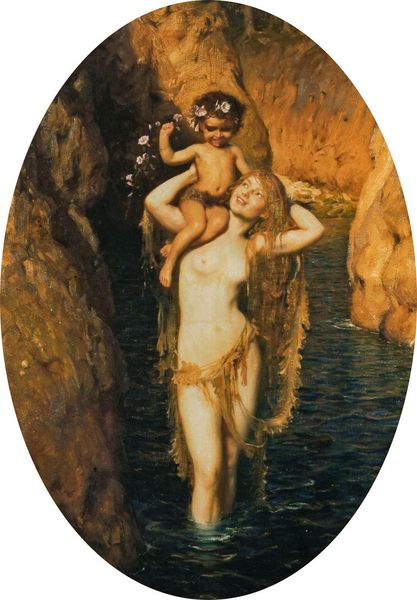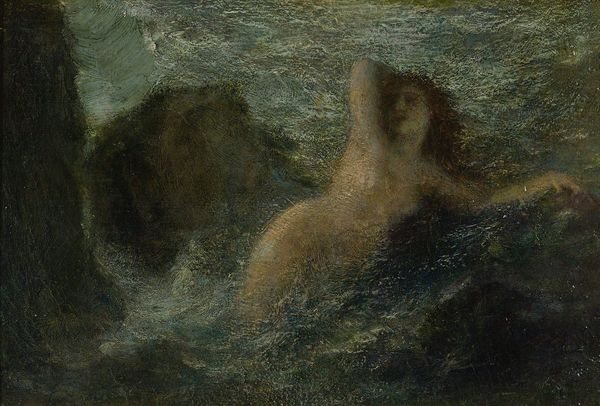
Dimensions: 180 x 238 cm
Copyright: Public domain
Editor: So, this is Arnold Böcklin's "Playing in the Waves" from 1883, currently housed at the Neue Pinakothek in Munich. It's an oil painting and the scene is, well, pretty wild. I mean, there's this dramatic, stormy sea and all these figures... nymphs, maybe? And this really unsettling satyr-like creature. What do you see in this piece? Curator: Well, considering the social and institutional context, I think we have to see this as more than just a depiction of mythological frolic. Böcklin was painting at a time when traditional academic art was being challenged. How do we make sense of Böcklin positioning himself, and this painting, between realism and this kind of… fin-de-siècle Symbolism? What is he trying to *do* with these figures? Editor: You mean, like, how is he pushing back against what was expected? I guess the overt mythological subject matter feels like a step away from strict realism, but it's not fully allegorical either. Curator: Exactly! It's almost a rejection of the growing industrial landscape by escaping to a pre-industrial mythical scene. The nudes and fantastical creatures allow him to engage with ideas about the human body and the natural world in ways that might be forbidden in a more realist painting. The 'playing' becomes more ominous viewed that way. The scene almost parodies academic tradition through a symbolic lens, making it accessible and strange at once. Wouldn't you agree? Editor: Definitely. It's like he's using these classical tropes, but making them feel totally bizarre and almost confrontational for the viewer, like the faces are judging you! Curator: And where does this unsettling effect place the work in the broader context of late 19th-century anxieties? It invites speculation, which makes it incredibly powerful as a historical and cultural artifact. Editor: I never considered it that way, seeing the social and artistic challenges of that time! I always thought of it purely as a mythological scene. This makes the painting even more compelling. Curator: Indeed. It's always vital to understand a piece of art within the contemporary cultural conversation.
Comments
No comments
Be the first to comment and join the conversation on the ultimate creative platform.
